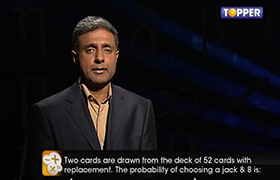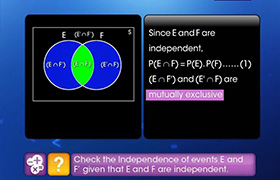CBSE Class 12-science Answered
doubt

Asked by armaanjain840 | 20 Dec, 2023, 17:59: PM
Since E1 , E2 , E3 are mutually exclusive events , then we have
p(E1) + p(E2) + p(E3) ≤ 1

26-3p ≤ 24 or p ≥ (2/3)
p(E3) ≤ 1 , hence p ≤ 1
The condition p ≤ 1 is satisfied for other probabilities of mutually exclusive events so that p(E1) ≤ 1 and p(E2) ≤ 1 .
Hence minimum value of p is (2/3) and maximum vaue of p is 1
maximum of p = p1 = 1
minimum of p = p2 = (2/3)
p1+ p2 = 1 + (2/3) = 5/3
Answered by Thiyagarajan K | 20 Dec, 2023, 21:28: PM
Concept Videos
CBSE 12-science - Maths
Asked by sachinkumarmishra1 | 31 Jan, 2020, 17:17: PM
CBSE 12-science - Maths
Asked by sachinkumarmishra1 | 29 Jan, 2020, 14:59: PM
CBSE 12-science - Maths
Asked by sachinkumarmishra1 | 27 Jan, 2020, 12:27: PM
CBSE 12-science - Maths
Asked by sachinkumarmishra1 | 24 Jan, 2020, 11:10: AM
CBSE 12-science - Maths
Asked by sachinkumarmishra1 | 23 Jan, 2020, 12:00: PM
CBSE 12-science - Maths
Asked by sachinkumarmishra1 | 22 Jan, 2020, 17:50: PM
CBSE 12-science - Maths
Asked by haroonrashidgkp | 05 Nov, 2018, 14:11: PM
CBSE 12-science - Maths
Asked by Topperlearning User | 04 Jun, 2014, 13:23: PM
CBSE 12-science - Maths
Asked by Topperlearning User | 04 Jun, 2014, 13:23: PM






